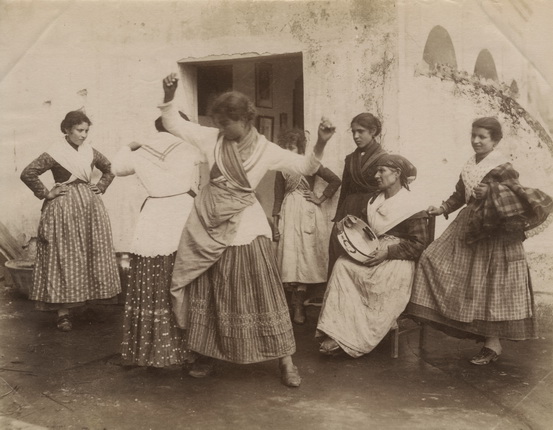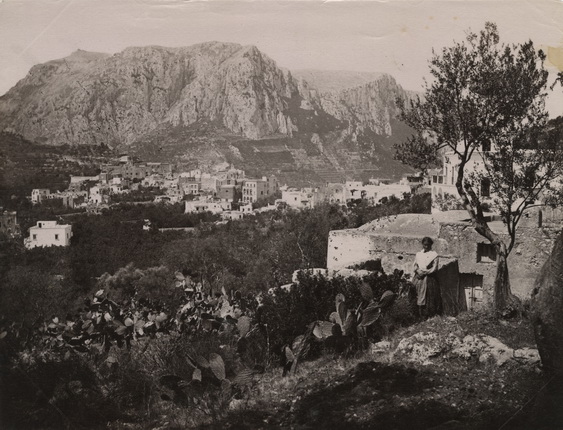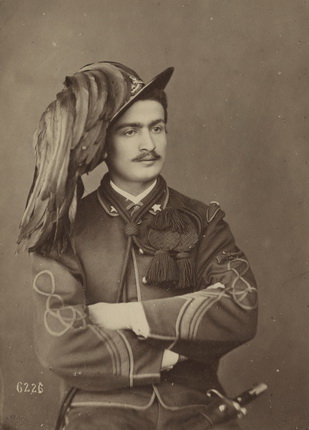Grand Tour: Russian version. Naples
Pavel and Anastasia Khoroshilov’s collection











Giorgio Sommer. Neapolitans: sellers of pasta, fish and wine. Naples. 1865
Edizione Esposito. Fishermen. Naples. 1870s
Giacomo Brogi. Fishermen on the beach of the Marina Piccola. Capri. 1900s
Giorgio Sommer. Lazzarone. Naples. 1870
Robert Rive. Neapolitan ladies. Naples. 1880s
Edizione Esposito. Monte Solaro. Capri. 1880
Edizione Esposito. Neapolitan lady. Naples. 1870s
Giorgio Sommer. Portrait of a bersagliere. 1860s. Naples
Roberto Rive. Panorama of Naples and the Gulf. 1860
Giorgio Sommer. Anfiteatro romano (Roman Amphitheater). Pompeii. 1870
Giorgio Sommer. Piazza del Plebiscito. Naples. 1860
Moscow, 6.02.2016—8.03.2016
exhibition is over
Share with friends
Curator: Anastasia Korotkova
For the press
As part of the 11th International Month of Photography in Moscow ‘Photobiennale 2016’, the Multimedia Art Museum, Moscow presents the exhibition ‘Grand Tour: Russian Version. Naples’ from the collection of Pavel and Anastasia Khoroshilov. This is the second series in the project ‘Grand Tour: Russian Version’. The first exhibition, devoted to Rome opened at MAMM in December and attracted great public interest.
From the early 19th century visiting Southern Italy became an essential feature of the Russian Grand Tour. Naples, Pompeii and environs attracted writers, philosophers and travellers not only for their rich history, but also their location, mild seaside climate and special atmosphere of dolce far niente (‘sweet idleness’). Famous Russian cultural figures such as I. Turgenev, M. Glinka, A. Herzen, N. Gogol, V. Solovyov and P. Muratov left rapturous accounts of time spent in Sorrento, Salerno and Amalfi, or on the island of Capri. A book by historian A. Levshin and scholarly articles by I. Tsvetaev are devoted to descriptions of archaeological excavations in Pompeii.
A trip to Campania was part of the obligatory programme for erstwhile Russian artists of the 19th century. For landscape artists S. Shchedrin Naples was a veritable artistic Mecca. Views of the Neapolitan coast were painted by I. Aivasovsky, F. Matveyev, A. Ivanov, O. Kiprensky and V. Surikov. ‘The Last Day of Pompeii’ by K. Bryullov was created after he visited the famous ruins.
Russian travellers visiting Naples wanted to leave with a souvenir: a watercolour portrait in front of the Vesuvius volcano, a copy of an ancient vase from the excavations at Pompeii or a photograph of picturesque views. Photographs were sold separately or bound in an album at souvenir shops, photo studios, hotels and train stations.
The early history of photography in Naples was largely related to foreign photographers attracted by its important position on the Grand Tour route and, therefore, the possibility of profit from selling images to travellers. For three decades the most acclaimed photographer in Southern Italy was Frankfurt native Giorgio Sommer. His main rival was British photographer Roberto Rive, who opened a studio in Naples in 1860. During the mid-1870s local photographic studios also appeared here, as a rule family businesses: the ateliers of the Esposito brothers, Brogi and Achille Mauri. In 1870 the celebrated Venetian photographer Carlo Naya, who captured scenes of everyday life on the island of Capri, moved to Naples.
The Neapolitan photography market was flooded with romantic ‘nature studies’: panoramic views of the city and its surroundings, seascapes, etc. One of the most popular subjects was a view of the Gulf of Naples, with Vesuvius in the background. Ascent to the crater of the volcano, the symbol of the city, was a compulsory part of the journey to Naples.
From 1858 to 1859 General Admiral Grand Duke Konstantin Nikolayevich embarked on a tour of Mediterranean countries. He invited a photographer to join the cruise, and retired naval officer Count Gavriil Ryumin, who had taken photography lessons in 1844 with Vincent Chevalier, a pupil of Louis Daguerre, stepped into the role. This journey resulted in the well-known series of large-format views of Southern Italy, including photographs of Pompeii.
In the exhibition prints on salted or albumen paper by Giorgio Sommer (1834-1914), Roberto Rive (1823-1889), Giacomo Brogi (1822-1881), Achille Mauri (1806-1883), Carlo Naya (1816-1882), Gavriil Ryumin (1841-1871), Edizione Esposito publishers and the photographic studio Cucconi provide a unique opportunity to learn about the early history of photography, which first appeared in 1839 and took just 20 years to become one of the most popular artistic media.
Photographs of Southern Italy differ from the austere, restrained views and architectural images of Rome. Pictures of Naples are ‘populated’ by the inhabitants: the favourite subjects of local photographers were incidental and staged scenes on the city streets (scenes on the sea front, at the market, street dances). Pride of place was occupied by portraits of Neapolitan characters: newspaper vendors, fishermen, elegant young ladies, carefree beggars and merry scugnizzi (street urchins).
The series displayed in this exhibition convey the lively atmosphere of Naples (‘Paradise at the foot of a volcano’), at the same time demonstrating the multi-faceted nature of photography: its complex relationship with painting traditions and ability to act as a travel journal or a source for study of the changing city.
With the support of
General information partner |





